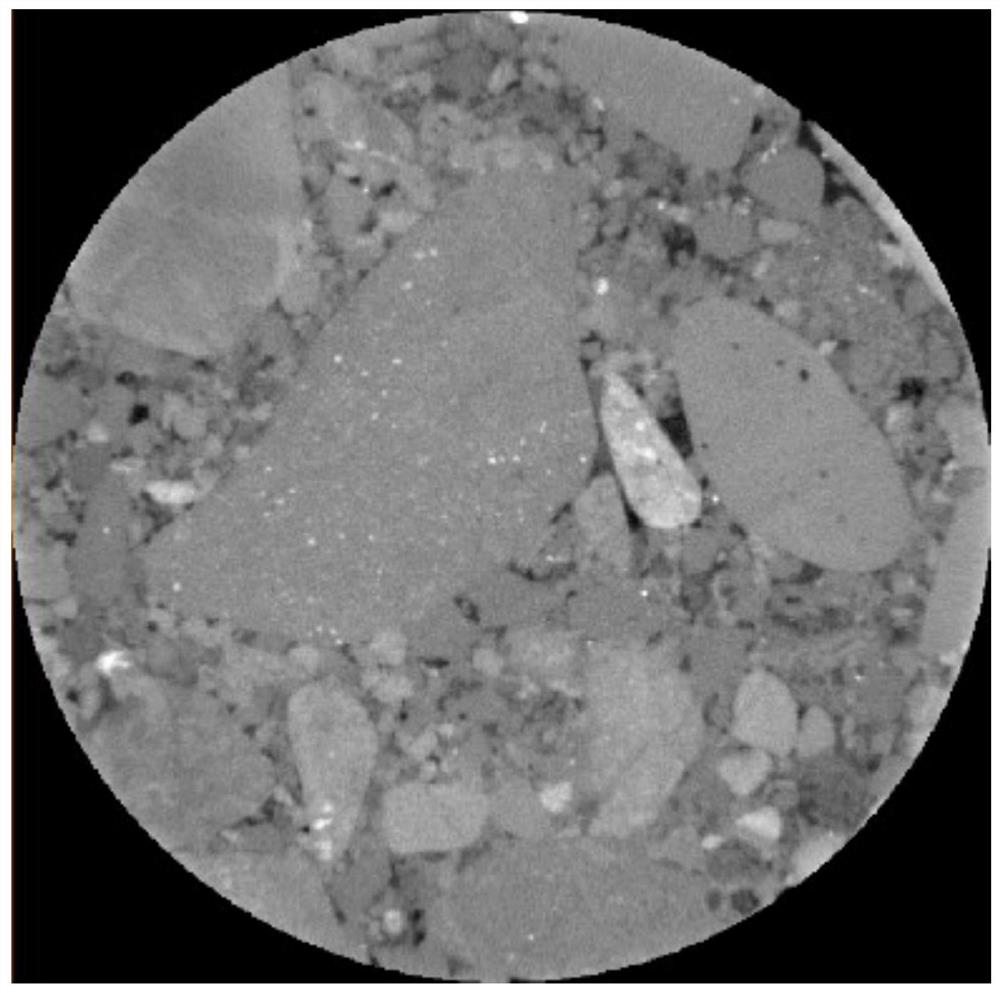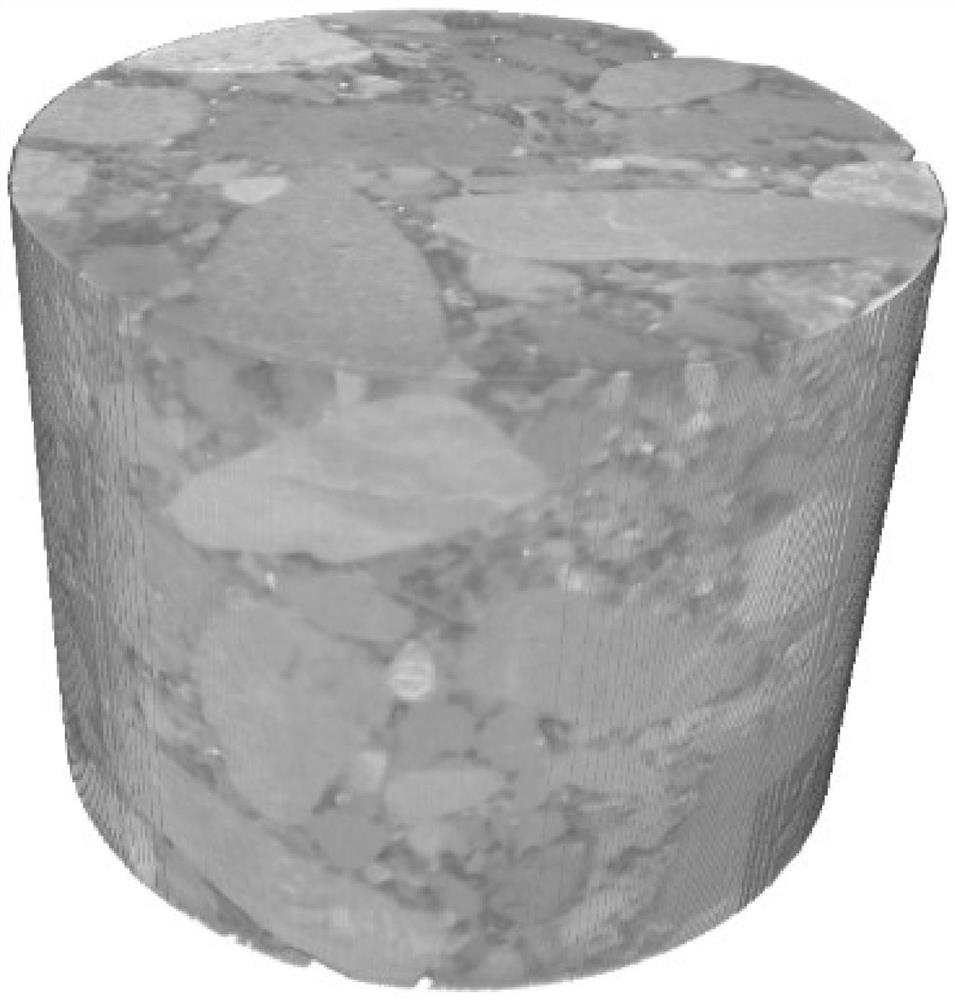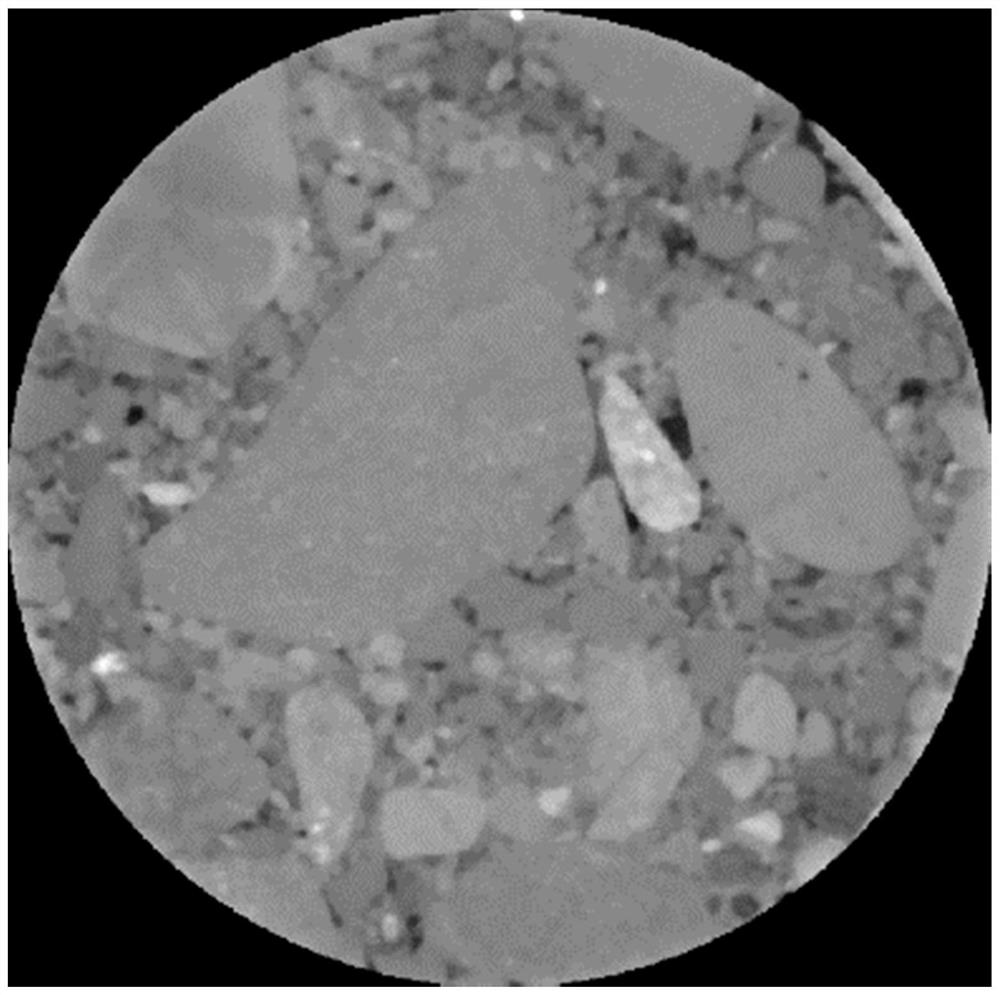Conglomerate granularity evaluation method based on CT three-dimensional model reconstruction
A three-dimensional model and evaluation method technology, applied in the field of oil and natural gas exploration and development, can solve the problems of large particle size range, damaged rock samples, poor applicability of conglomerate, etc., to achieve the effect of expanded application and reliable analysis
- Summary
- Abstract
- Description
- Claims
- Application Information
AI Technical Summary
Problems solved by technology
Method used
Image
Examples
Embodiment 1
[0031] Example 1: See Figure 1 to Figure 13 , a conglomerate particle size evaluation method based on CT three-dimensional model reconstruction of the present embodiment, comprising the following steps: S1: Select a conglomerate sample with a diameter of 10mm-100mm, and perform three-dimensional scanning on the selected conglomerate to obtain conglomerate The two-dimensional grayscale image of the rock sample and the three-dimensional digital core data volume; S2: image processing on the two-dimensional grayscale image, eliminating image noise and enhancing the contrast between the conglomerate and the matrix in the image; S3: performing image processing on the gravel in the image Extraction and segmentation; S4: Calculate the diameter of each gravel and build a three-dimensional model of the gravel; S5: Analyze the particle size of the gravel and interstitials in the conglomerate. It realizes the convenient and reliable analysis of the size and distribution of gravel in sand...
Embodiment 2
[0032] Embodiment 2: Step S1 in this embodiment includes observing the apparent structure of conglomerate samples, and selecting representative conglomerate samples that meet the analysis requirements. According to the size of the surface gravel, and based on the principle that the sample size is larger than the diameter of the largest gravel, select conglomerate samples with a diameter of 10 mm to 100 mm. In step S1 of this embodiment, it also includes three-dimensional scanning of the selected conglomerate sample by using a CT scanning system to obtain a grayscale image of the conglomerate sample and a three-dimensional digital core data volume.
Embodiment 3
[0033] Embodiment 3: In step S2 of this embodiment, in view of various types of noise in the grayscale image of the conglomerate sample in the scanning environment, median filtering is performed on the grayscale image to eliminate various types of noise in the image. In step S2 of this embodiment, the histogram equalization process is performed on the two-dimensional grayscale image, and the grayscale histogram of the original image is changed from a relatively concentrated grayscale range to a uniform distribution in the entire grayscale range, increasing the image density. local contrast. In the obtained two-dimensional grayscale image, the gray scale of the gravel and the matrix is not uniform, which makes the gravel and the matrix appear homogeneous and confused with each other. During the segmentation, the matrix and the gravel are prone to threshold overlap, which makes the gravel and the matrix easy to be misidentified. The image affects the segmentation effect, and t...
PUM
| Property | Measurement | Unit |
|---|---|---|
| Particle size | aaaaa | aaaaa |
| Diameter | aaaaa | aaaaa |
| Particle size | aaaaa | aaaaa |
Abstract
Description
Claims
Application Information
 Login to View More
Login to View More - R&D
- Intellectual Property
- Life Sciences
- Materials
- Tech Scout
- Unparalleled Data Quality
- Higher Quality Content
- 60% Fewer Hallucinations
Browse by: Latest US Patents, China's latest patents, Technical Efficacy Thesaurus, Application Domain, Technology Topic, Popular Technical Reports.
© 2025 PatSnap. All rights reserved.Legal|Privacy policy|Modern Slavery Act Transparency Statement|Sitemap|About US| Contact US: help@patsnap.com



